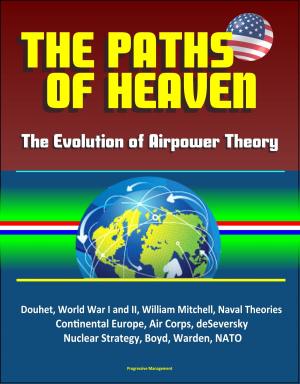Air Force System Safety Handbook: Costs, Objectives, Policy and Process, Risk Assessment, Flight Mishaps, Analysis Techniques, Contractors, Nuclear and Explosive Hazards, Biomedical Safety
Nonfiction, Science & Nature, Technology, Aeronautics & Astronautics, History, Military, Aviation| Author: | Progressive Management | ISBN: | 9781301077069 |
| Publisher: | Progressive Management | Publication: | February 20, 2013 |
| Imprint: | Smashwords Edition | Language: | English |
| Author: | Progressive Management |
| ISBN: | 9781301077069 |
| Publisher: | Progressive Management |
| Publication: | February 20, 2013 |
| Imprint: | Smashwords Edition |
| Language: | English |
The Air Force System Safety Handbook was prepared as a resource document for program office system safety managers and system safety engineers. The handbook provides considerable insight to the general principles, objectives, and requirements of applying system safety concepts to the Air Force system acquisition and logistical support processes. Programs vary greatly in their scope and complexity, requiring a tailored system safety effort. Assigned to this difficult task are military and government personnel with varied education and experience backgrounds. These system safety practitioners need a comprehensive understanding of the system safety process and the complexities of applying it to a given program. This handbook will assist in providing much of the necessary information but additional, more detailed guidance will be required from the program office and their higher headquarters system safety experts.
The ultimate objective of any organization within the Air Force is maximizing combat capability. One element in this maximizing process is protecting and conserving combat weapon systems and their support equipment. Preventing mishaps and reducing system losses is one important aspect of conserving these resources. System safety contributes to mishap prevention by minimizing system risks due to hazards consistent with other cost, schedule, and design requirements. The fundamental objective of system safety is to identify, eliminate or control, and document system hazards.
1.0 Introduction To System Safety * 2.0 System Safety Policy And Process * 3.0 Risk Assessment * 4.0 System Safety Program * 5.0 System Safety Program Plan (Sspp) * 6.0 Other Management Tasks (Ref 30) * 7.0 Design And Integration Tasks * 8.0 Design Evaluation, Compliance, And Verification * 9.0 Analysis Techniques * 10.0 System Safety Life-Cycle Activities * 11.0 Program Office System Safety * 12.0 Contracting For System Safety * 13.0 Evaluating Contractor System Safety * 14.0 Facilities System Safety * 15.0 Supplementary Requirements * 16.0 Nuclear Safety * 17.0 Explosives Safety * 18.0 System Safety In Logistics * 20.0 Test And Evaluation Safety
The Air Force System Safety Handbook was prepared as a resource document for program office system safety managers and system safety engineers. The handbook provides considerable insight to the general principles, objectives, and requirements of applying system safety concepts to the Air Force system acquisition and logistical support processes. Programs vary greatly in their scope and complexity, requiring a tailored system safety effort. Assigned to this difficult task are military and government personnel with varied education and experience backgrounds. These system safety practitioners need a comprehensive understanding of the system safety process and the complexities of applying it to a given program. This handbook will assist in providing much of the necessary information but additional, more detailed guidance will be required from the program office and their higher headquarters system safety experts.
The ultimate objective of any organization within the Air Force is maximizing combat capability. One element in this maximizing process is protecting and conserving combat weapon systems and their support equipment. Preventing mishaps and reducing system losses is one important aspect of conserving these resources. System safety contributes to mishap prevention by minimizing system risks due to hazards consistent with other cost, schedule, and design requirements. The fundamental objective of system safety is to identify, eliminate or control, and document system hazards.
1.0 Introduction To System Safety * 2.0 System Safety Policy And Process * 3.0 Risk Assessment * 4.0 System Safety Program * 5.0 System Safety Program Plan (Sspp) * 6.0 Other Management Tasks (Ref 30) * 7.0 Design And Integration Tasks * 8.0 Design Evaluation, Compliance, And Verification * 9.0 Analysis Techniques * 10.0 System Safety Life-Cycle Activities * 11.0 Program Office System Safety * 12.0 Contracting For System Safety * 13.0 Evaluating Contractor System Safety * 14.0 Facilities System Safety * 15.0 Supplementary Requirements * 16.0 Nuclear Safety * 17.0 Explosives Safety * 18.0 System Safety In Logistics * 20.0 Test And Evaluation Safety















